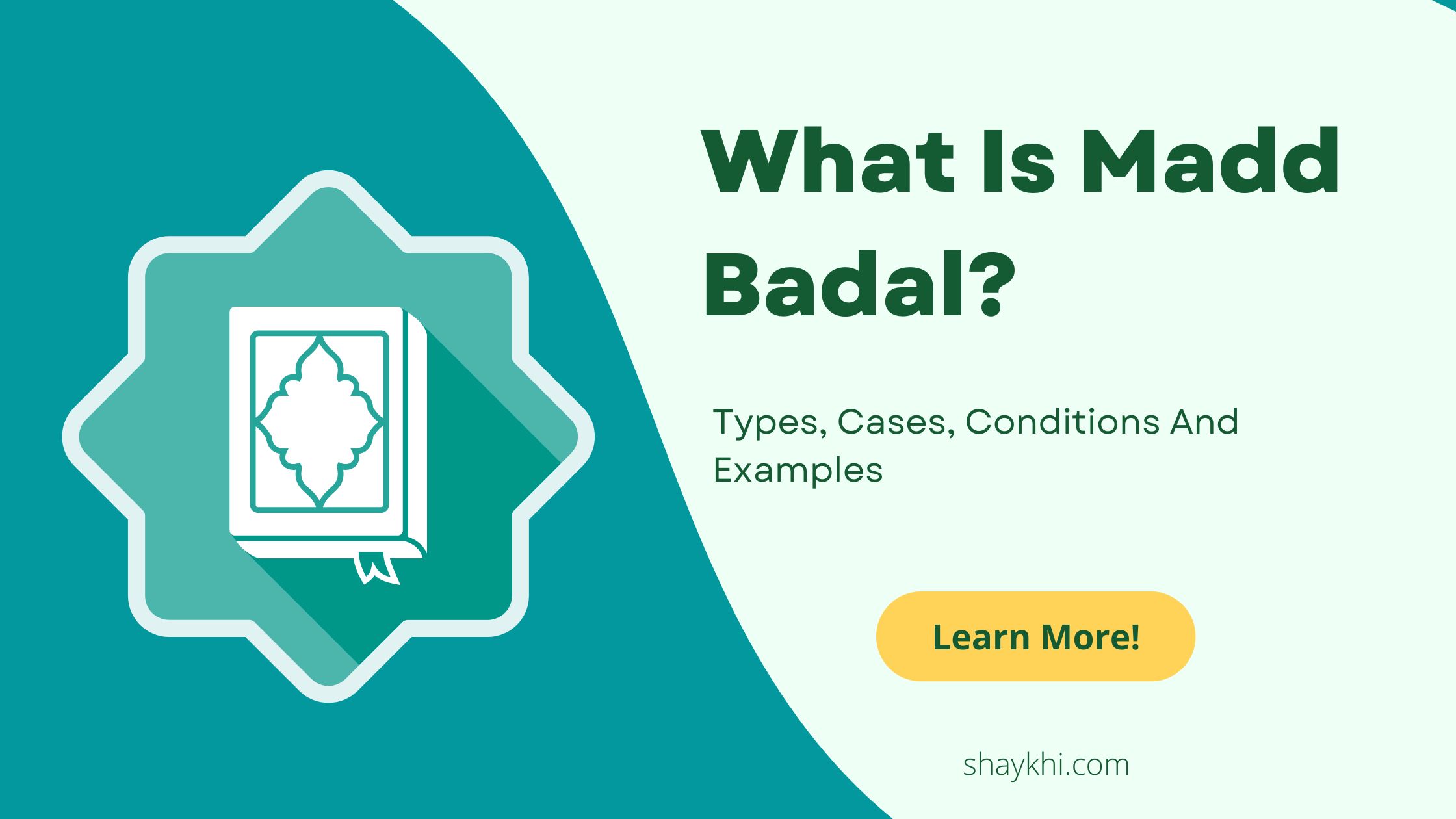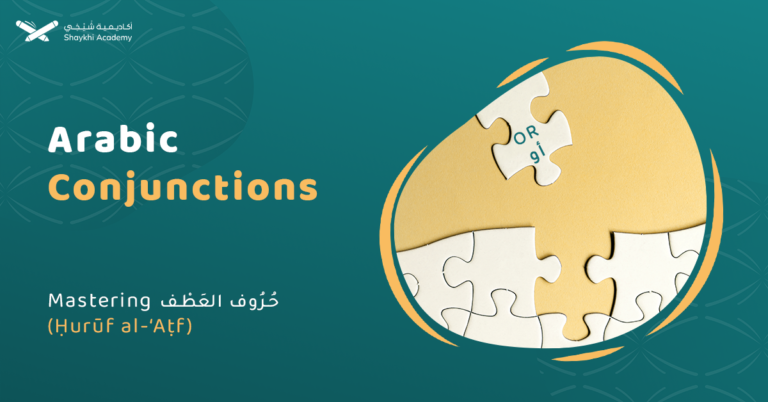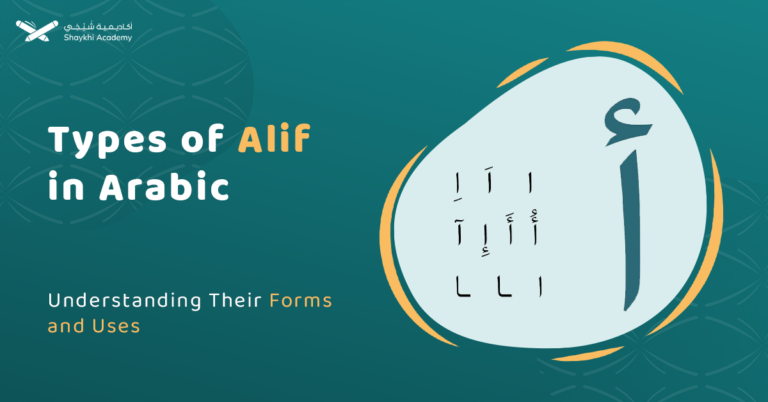Madd Badal is a Tajweed rule where elongation occurs when a hamzah (glottal stop) precedes a Madd letter (alif, waw, or ya), typically extended by two counts. It includes types like fully pronounced hamza and facilitated hamza. Applied when a hamzah is followed by a Madd letter, Madd Badal is learned through study, listening to experienced reciters, recording oneself, and seeking guidance from teachers, with online platforms like Shaykhi Academy offering convenient learning options.
The Madd Badal plays an important role in Tajweed, as it helps to achieve correct and accurate pronunciation of Quranic verses. Understanding and applying the madd badal helps improve recitation of the Holy Quran and increase mastery of recitation in accordance with the rules of Tajweed.
So what is the meaning of madd badal?
What is Madd Badal?
Madd Badal is one of the types of elongations (Madd) in the rules of Tajweed, specifically occurring when a hamzah (glottal stop) precedes a Madd letter.
When a hamzah appears in a word before a Madd letter, it becomes Madd Badal. For example, in the word “آمنوا”, the Madd letter (the alif) comes after the hamzah.
Madd Al Badal Examples
So we can understand this type of madd well, let’s look at some examples:
Madd al-Badal is a type of prolongation (madd) in Tajweed where a vowel letter (madd letter) comes after a Hamzat al-Qat’ (glottal stop). It is extended by two counts (harakat). Here are some examples of Madd al-Badal:
- آمَنَ:
Here, the Hamzat al-Qat’ is followed by an alif (أ)
- إيمان:
Here, the Hamzat al-Qat’ is followed by a ya (ي)
- أوتوا:
Here, the Hamzat al-Qat’ is followed by a waw(و)
These examples show how the vowel letter (madd letter) follows a Hamzat al-Qat’, forming Madd al-Badal.
What are the Types of Madd Badal?
There are four types of Madd badal which are:
1. When the hamza is fully pronounced:
This includes both badal and Similar badal, such as in (المستهزئين), (متكئين), (يَؤُوساً).
2. When the hamza is changed through facilitation:
This involves fully pronouncing the first hamza and facilitating the second one, as in (ءءلهتنا – ءَالهتنا).
3. When the hamza is changed through substitution:
This is according to “Warsh” and involves fully pronouncing the first hamza and substituting the second one with a ya, as in (مِنَ السَّمَاءِ ءَاية – من السماء ياية).
4. When the hamza is changed through transfer:
This involves transferring the vowel of the hamza to the preceding letter, according to Warsh, as in (مَنْ ءَامن – منَامن).
What are the rules of Madd Al Badal?
Madd badal has an important rule which is permissibility, so what does it mean? It means that it is permissible to shorten or lengthen madd badal. Some reciters shorten it, while others lengthen it.
According to the Shatibiyyah method, all reciters shorten it except for Warsh. According to the Tayyibah method, all reciters shorten it except for Warsh and Hamza.
It is lengthened by two counts (harakat) according to Hafs and all other reciters except for Warsh, who has the option of three lengths: two, four, or six counts.
Cases of Madd Al-Badal
Madd al-badal has 4 cases which are:
1. Present in both pause and continuation:
When Madd Al-Badal occurs at the beginning of a word like,
“آمن الرسول”
(Surah Al-Baqarah, 2:285) – The hamza is followed by a long alif.
2. Present in continuation but not in pause:
For example:
“الخاطئين”
(Surah Yusuf, 12:29).
3. Present in pause but not in continuation:
In “وجاءوا أباهم”
(Surah Yusuf, 12:16).
The long vowel here is waw “و”. When pausing on “جاءوا”, the lengthening is considered Madd Al-Badal because the hamza precedes the long vowel.
In continuation, the long vowel is followed by a hamza, making it Madd Jaiz Munfasil (permissible separated lengthening), which is stronger than Madd Al-Badal and can be lengthened for two, four, or five counts.
4. Present in initiation but not in continuation:
Example: “الذي اؤتمن” (Surah Al-Baqarah, 2:283).
Example: “أم لهم شرك في السماوات ائتوني بكتاب” (Surah Al-Ahqaf, 46:4).
In continuation: The first hamza is dropped, and the second hamza is pronounced as a silent hamza.
In initiation: The silent hamza is replaced with a long vowel that matches the movement (harakah) before it (i.e., the hamzat al-wasl):
“الذي اؤتمن” becomes “أُوتُمن”.
“أم لهم شرك في السماوات ائتوني بكتاب”
becomes
“أم لهم شرك في السماوات. إِيتوني بكتاب”.
Conditions to Apply and Not to Apply Madd Al-Badal
There are certain conditions in which Madd Al-Badal must be applied and other situations where it should not be applied.
When to apply madd badal?
In the Presence of Hamza followed by a Madd Letter:
Madd Al-Badal occurs when a hamzah (ء) is followed directly by a madd letter (ا, و, or ي).
For example:
“آمن الرسول”
(Surah Al-Baqarah, 2:285)
Pronunciation: The madd letter must be pronounced clearly and be part of the word structure where the hamza precedes it.
When Not to Apply Madd Badal?
In Absence of a Madd Letter after the Hamza:
If the hamza (ء) is not followed by a madd letter, Madd Al-Badal does not occur.
Examples:
“الخاطئين”
(Surah Yusuf, 12:29)
Here, the hamza does not directly precede a madd letter in the continuation of the word.
“وجاءوا أباهم”
(Surah Yusuf, 12:16)
In continuation, the hamza is followed by another vowel or letter, making it a different type of madd (Madd Jaiz Munfasil).
In Specific Continuation Contexts:
When a hamza is followed by a madd letter in continuation but turns into a different type of madd due to the context, such as Madd Jaiz Munfasil, Madd Al-Badal is not applied.
Example: When connecting words where a madd letter is followed by another hamza, the context of the recitation may turn it into Madd Jaiz Munfasil, and hence Madd Al-Badal is not applied.
Initiation Context:
When starting a word with a hamza that is part of the word but drops in the continuation, changing the context of recitation.
Example:
“الذي اؤتمن” becomes “أُوتُمن” in initiation, not applying Madd Al-Badal.
How to learn Madd Badal?
There are some steps that you should follow in order to learn to madd al-badal, which are:
1. Study and memorization:
At this level, you must become familiar with the rules and examples of extending badal and memorize them well.
2. Listen and repeat:
Listen attentively to the recitations of famous reciters who have mastery and experience in the science of Tajweed. Pay close attention to their pronunciation of the hamza, especially when it turns into the letter mad, and repeat that after them.
3. Record yourself:
Auditory training is good, so it is best to record yourself reciting verses that contain hamzahs converted to madd. By listening to your recordings, you can identify any errors or things that need to be corrected.
4. Ask for guidance:
Seek guidance from an experienced teacher or join Holy Quran recitation classes where Tajweed is taught comprehensively.
Learn Tajweed With A Tajweed Tutor
If you do not have time or do not have a teacher near you, you can use online learning through Shaykhi Academy, as it provides you with expert teachers in the science of Tajweed who can help you with this. It also offers you a free trial class at the beginning so that you can try it out before registering.
Why Choose Shaykhi Academy?
- Connect with highly qualified native tutors.
- Flexible scheduling to suit your busy lifestyle.
- Affordable classes tailored for all levels.
- Accessible from anywhere around the globe.
Discover Our Range of Courses:
- Arabic Noorani Qaida: Lay a solid foundation for Quranic studies.
- Online Quran Classes for Kids: Engaging lessons for lifelong learning.
- Tajweed Rules for Kids: Learn to recite with confidence.
- Quran Hifz for Kids: Step-by-step guidance to memorize the Quran.
- Quran for Adults: Introduce yourself to Quran reading and Tajweed rules.
- Online Arabic Courses: Master the language of the Quran.
- Islamic Studies: A wide range of topics related to Islam, including theology, law, Quranic studies, Hadith.
Don’t Miss Out on Your Chance to Excel!Whether you’re a beginner or seeking advanced knowledge, Shaykhi Academy can guide you! Book your free trial now

Conclusion:
Madd Badal is a Tajweed rule in Quranic recitation where elongation (madd) occurs when a hamzah (glottal stop) precedes a Madd letter (alif, waw, or ya). This rule helps achieve accurate pronunciation and mastery of the Holy Quran’s recitation.
There are four types of Madd Badal: fully pronounced hamza, facilitated hamza, hamza changed through substitution, and hamza changed through transfer. Madd Badal can be extended by two counts, with some reciters offering variations, particularly Warsh who allows extensions of two, four, or six counts.














































